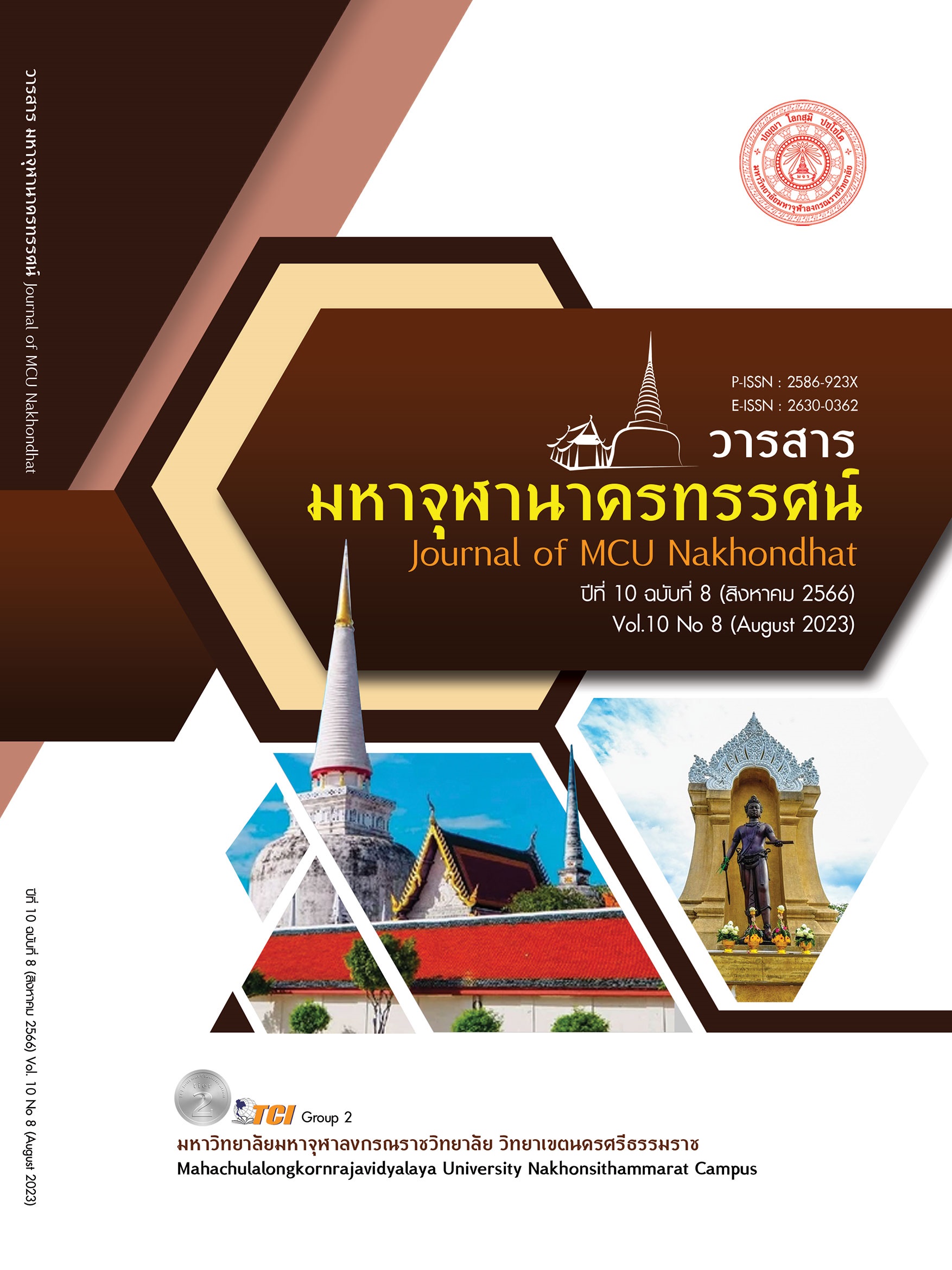A STUDY OF LEARNING ACHIEVEMENT AND SATISFACTION WITH THE WESTERN MUSIC THEORY TEACHING MODULE ON KODALY’S METHOD FOR THE 2ND YEAR STUDENTS OF THE VOCATIONAL CERTIFICATE LEVEL AT CHANTHABURI COLLEGE OF DRAMATIC ARTS
Main Article Content
Abstract
The purposes of this research were as follows: 1) to study the learning achievement of the second - year student in a vocational certificate at Chanthaburi collage of Dramatic Art in the subject of notation theory using a teaching package on the international music notation theory according to Kodaly teaching concepts; and 2) to study the satisfy the student in terms of teaching and learning management with teaching packages for the international music notation theory. This research was the experimental research for 60 students sample on the second semester between January and March that was 10 periods (50 minutes per period). And their achievements were measured every week after school. The research tools were the teaching package on the international music notation theory, pre- learning, post-learning, achievement tests, and satisfaction questionnaire. The results are found that the mean score before learning was 9.65 and the mean score after learning was 21.18. When analyzing the scores of pre-learning and post-learning they are found that the t-value was 34.79. was indicated that the learning achievement after learning was higher than before learning at a statistical significance of 0.05. The satisfaction of the students towards the developed teaching package is found that the results of the overall satisfaction analysis were at the high level ( = 4.41). When they were considered the classification by aspect, they are found that the measurement aspect was the highest level of satisfaction, ( = 4.63), at the highest level. The aspect of learning activities was the aspect that was the lowest satisfaction level, which was ( = 4.11), at a high level.
Article Details

This work is licensed under a Creative Commons Attribution-NonCommercial-NoDerivatives 4.0 International License.
References
เหนือดวง พูลเพิ่ม. (2560). การจัดการเรียนรู้วิชาดนตรี ตามแนวคิดของซูซูกิร่วมกับการเรียนรู้แบบร่วมมือเพื่อพัฒนาทักษะการขับร้องและความสามารถในการทำงานเป็นทีมสำหรับนักเรียนชั้นประถมศึกษาปี
ที่ 5. ใน วิทยานิพนธ์ศึกษาศาสตรมหาบัณฑิต สาขาวิชาหลักสูตรและการสอน. มหาวิทยาลัยธุรกิจบัณฑิตย์.
กองส่งเสริมวิชาการและงานวิจัย สถาบันบัณฑิตพัฒนศิลป์ กระทรวงวัฒนธรรม. (2562). หลักสูตรดุริยางคศิลป์ ระดับชั้นประกาศนียบัตรวิชาชีพ พุทธศักราช 2562. (พิมครั้งที่ 2). นครปฐม: บริษัท ไทภูมิ พับลิชชิ่ง จำกัด.
ชัยยงค์ พรหมวงศ์. (2523). นวัตกรรมและเทคโนโลยีทางการศึกษาการสอน. กรุงเทพมหานคร: ไทยวัฒนาพานิช.
ชัยยงค์ พรหมวงศ์. (2528). เอกสารชุดการสอนวิชาเทคโนโลยีและสื่อสารทางการศึกษา. นนทบุรี: มหาวิยาลัยสุโขทัยธรรมาธิราช.
ประพันศักดิ์ พุ่มอินทร์. (2554). ทฤษฎีการสอนดนตรี. เรียกใช้เมื่อ 22 เมษายน 2565 จาก https://suppavit 014.wordpress.com.
มูอาซ อับดุลเลาะแม. (2562). การพัฒนารูปแบบการเรียนการสอนการเรียนรู้ร่วมกันด้วยชุดการสอนด้วยความเป็นจริงเสริมเพื่อพัฒนาทักษะการอ่านภาษาอาหรับของนักเรียนชั้นประถมศึกษาปีที่ 1. ใน
วิทยานิพนธ์การศึกษามหาบัณฑิต สาขาวิชาเทคโนโลยีและการสื่อสารศึกษา. จุฬาลงกรณ์มหาวิทยาลัย.
วิรุฬ พรรณเทวี. (2542). ความพึงพอใจของประชาชนต่อการให้บริการของหน่วยงานกระทรวงมหาดไทยในอำเภอเมือง จังหวัดแม่ฮ่องสอน. ใน วิทยานิพนธ์รัฐศาสตรมหาบัณฑิต สาขาวิชาการเมืองและการปกครอง. มหาวิทยาลัยเชียงใหม่.
สิชณน์เศก ย่านเดิม. (2558). แนวคิดทฤษฎีการสอนดนตรี. วารสารศิลปกรรมศาสตร์ มหาวิทยาลัยศรีนครินทรวิโรฒ, 19(2), 27-28.
อนุวัติ คูณแก้ว. (2562). การวัดและประเมินผลการศึกษาแนวใหม่. (พิมพ์ครั้งที่ 3). กรุงเทพมหานคร: สำนักพิมพ์จุฬาลงกรณ์มหาวิทยาลัย.


